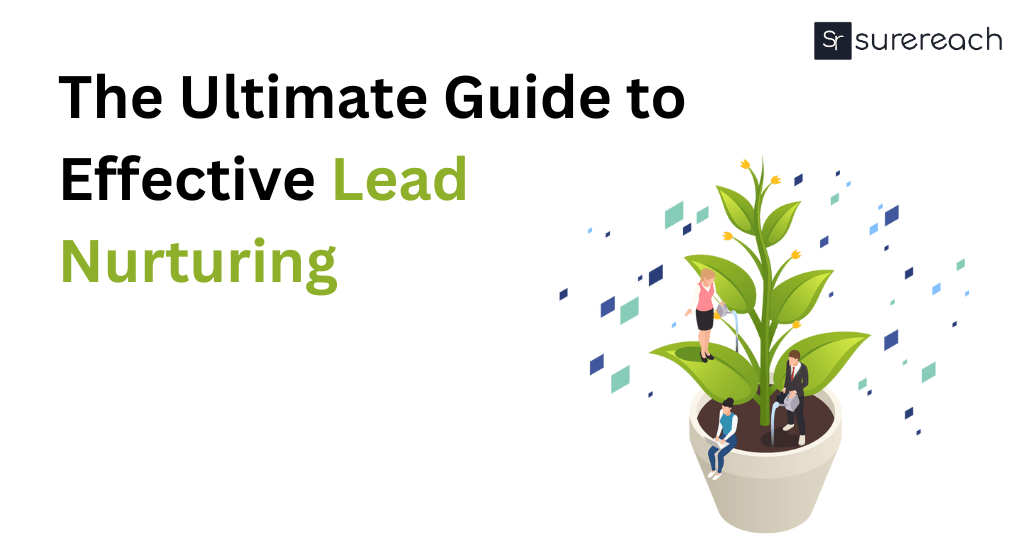What Is Inside Sales?
Inside sales is the practice of communicating with prospects or customers by phone, email, or other internet methods, rather than meeting them in person as in the past. Inside sales rely heavily on technology and communication channels.
Inside sales teams are the first to engage with prospects, understand their requirements, answer their inquiries, and qualify them as leads. The inside sales team follows up on leads generated by the marketing team to ensure that the prospects are a good fit for their product.
Inside Sales Meaning
Inside sales is, without a question, hard. However, once you get the hang of it, you’ll realize that practically every sales representative confronts the same problems and eventually overcomes them. In day-to-day sales, various forces operate as roadblocks for inside sales agents, making it harder for them to fulfill their targets.
However, where there’s a will, there’s a way! As an inside sales person, you can overcome any difficulty. We’ve compiled a list of some of the problems you may experience in your inside sales career, as well as how to overcome them with a little effort.
Inside Sales Strategy
-
Overcoming a rising number of contests.
Starting a business is becoming increasingly simple. As the number of new enterprises grows, so does the competition.
With this transformation in the working environment, inside salespeople are having difficulty finding and retaining new clients, especially because everyone else in the market has something better to offer.
How to solve this challenge: Research your rivals and learn what they use as a competitive edge. Then, examine your own unique selling points and deliver them in the most effective way to capture your prospects’ attention.
-
Insufficient time to complete all tasks
Every sales representative complains about not having enough time.
Inside sales professionals spend a significant amount of time each day nurturing leads, following up with prospects, making cold calls, organizing meetings, and putting data into the system.
How to address this challenge: Businesses could invest in a CRM for their sales staff, which will minimize manual labor through automation and other critical productivity tools.
In addition, sales representatives should avoid being distracted by external variables such as in-office sounds and social media notifications on their smartphones.
-
Ensure that they receive high-quality leads
It’s no surprise that sales professionals come across a lot of leads every day. However, not all of the leads shared by the marketing team are valid. Prospecting the proper leads is one of the most time-consuming activities for any sales representative, and it may be a significant barrier to completing agreements.
How to address this challenge: Effective communication between the sales and marketing teams is critical to generating quality leads. Request that your management arrange meetings between the two departments to discuss your problems, and try to persuade them to understand and cooperate with your needs.
-
Staying motivated in an indoor setting
Unlike outdoor sales, which frequently involves a change of scenery and work environment, an inside sales job might be somewhat dull because you have to work in the same office with the same people every day.
In such cases, inside sales representatives frequently lose motivation and become sidetracked by the issues indicated in the second paragraph.
How to solve this challenge: With repeated activities and a predictable environment, sales reps must view each client encounter as a unique opportunity, focusing on what they can do to improve their client’s experience. This way, you’ll have something fresh to accomplish every day and may modify it as needed.
-
Coming up with creative outreach concepts
Accept that the clients have already become accustomed to the standard, so-called personalized emails that merely include their first names as personalisation. Many inside sales professionals struggle to come up with innovative ways to personalize their customer encounters.
How to tackle this challenge: Use automation to your advantage and optimize your emails and SMS. Use templates to include more than just the client’s name, and demonstrate how well you researched them and their business before making a sale.
Sign up and get 20 credits for free!
We have 3 million+ contacts stored to connect you with prospects all over India
Inside Sales Tips
- Prospect strategically.
Meaningful time spent conversing with your prospects will always win out over the amount of calls made. If you’re making 100 calls every day, chances are you’re failing at the first hurdle and not talking about anything meaningful with your prospect at that time.
As an inside sales professional, you should be prepared to put in some effort and become more strategic in your approach. Cold calls used to be effective, but not anymore in today’s corporate environment. A warm call, whether it be a referral from your existing client, a cultivated marketing lead, or even some nice banter on social media, will always reign supreme.
- Perfect your pitch.
You’ve made it past the gatekeeper and been sent to your contact. You now have around 30 seconds to gain their attention. Buyers today are extremely busy, and they do not have time to take your call.
So, for your contact to truly listen to you, what you have to give in your introduction spiel must outweigh everything else they are doing at the time.
Don’t attempt to jam everything into those 30 seconds; instead, stimulate their curiosity and request a secondary meeting to talk in further depth, since you can see they are busy.
Don’t attempt to jam everything into those 30 seconds; instead, stimulate their curiosity and request a secondary meeting to talk in further depth, since you can see they are busy.
After the standard introductions, spend the remainder of your time talking about THEM and how your product or service may benefit them. Leading inquiries, such as “How do you guys do X?” are effective discussion starters. If you strike the nail on the head, your prospect will start chatting a little more.
The ideal type of pitch is to have none at all. By all means, have a rough concept of what you want to say and know your product well and out, but each and every sales call should be handcrafted with love and care, suited to your prospect, and not sound like a sales pitch at all.
We can all hear a sales pitch from a mile away. As soon as I hear the beginning of a rehearsed pitch, I turn it off, generally on silent, and let them rabbit on for 20 minutes. Have I ever actually listened enough to interact with others like this? A big no! It’s simply unpleasant and uninteresting.
- Ask for references.
Requesting references may be a challenging process. After all, you’re asking your current paying consumers for a favor. However, if you don’t approach supporters and existing consumers of your product or service for references, you’re doing yourself a disservice.
Customer references might be as brief as a one-liner or as lengthy as a video case study, but they are invaluable. Impartial feedback from your present customers can be all the encouragement your prospects need to obtain the go-ahead from them, especially if they can empathize with the problems or struggles your client had.
- Capitalize on incoming leads.
Your marketing staff (assuming you have one!) is doing an excellent job of generating traffic to your website, educating them on what you have to offer, and piquing their interest just enough to submit a form, pick up the phone, or download a piece of material.
An incoming lead is a purchasing indicator by itself. If your prospect is qualified, they have taken the time out of their day to express an interest in what your firm does. Inbound leads are a dream come true for the inside sales rep, therefore follow up on them promptly! It makes us marketers unhappy when all of our hard work is wasted.
Even if they don’t seem to be a good fit for what you have to give, they might be able to send you in the direction of a friend who is.
In the sales industry, understanding outbound sales is critical for development and success. You can step up your game and close transactions with confidence if you understand the process, apply smart methods, and use tools like Surereach.
Now, take the first step towards outbound sales success. Access Surereach’s excellent features, such as Email Finder and Phone Number Finder, today: https://surereach.io/








Sanidhya Arora
More posts by Sanidhya Arora